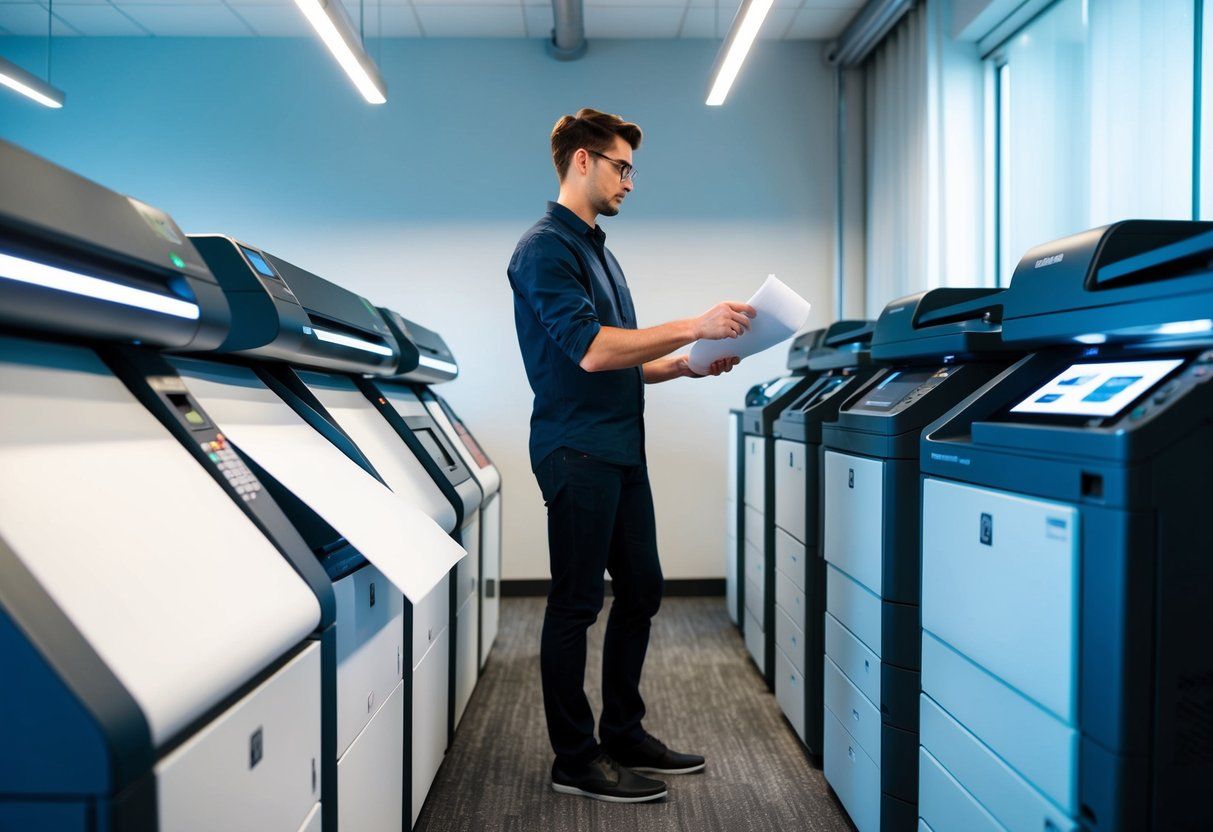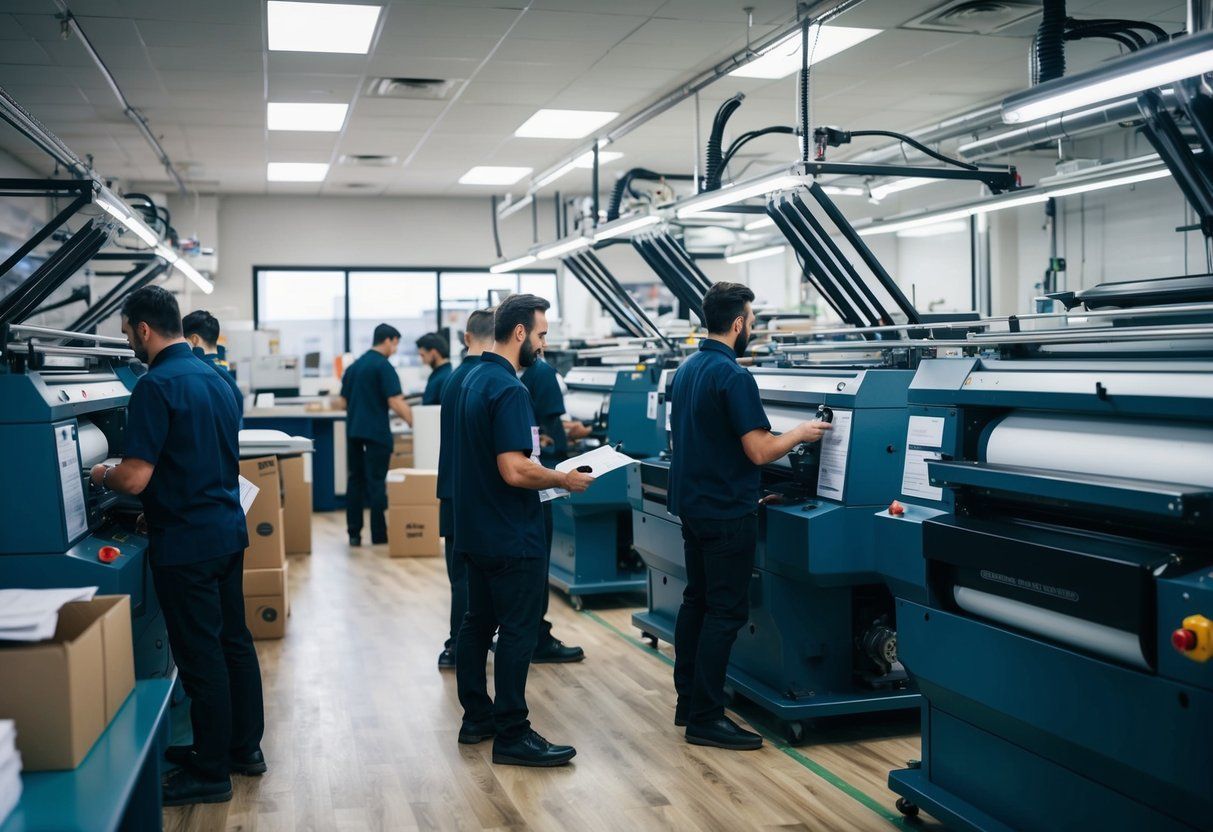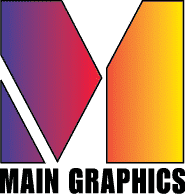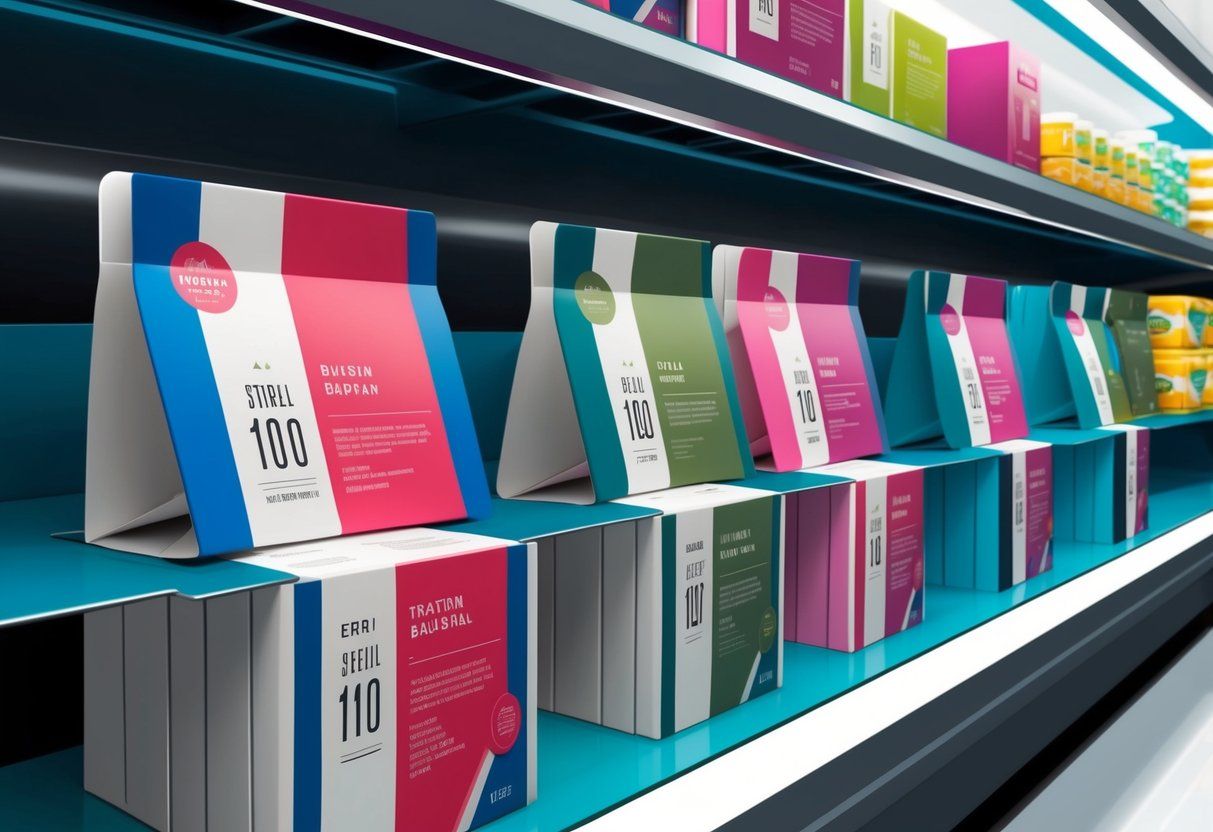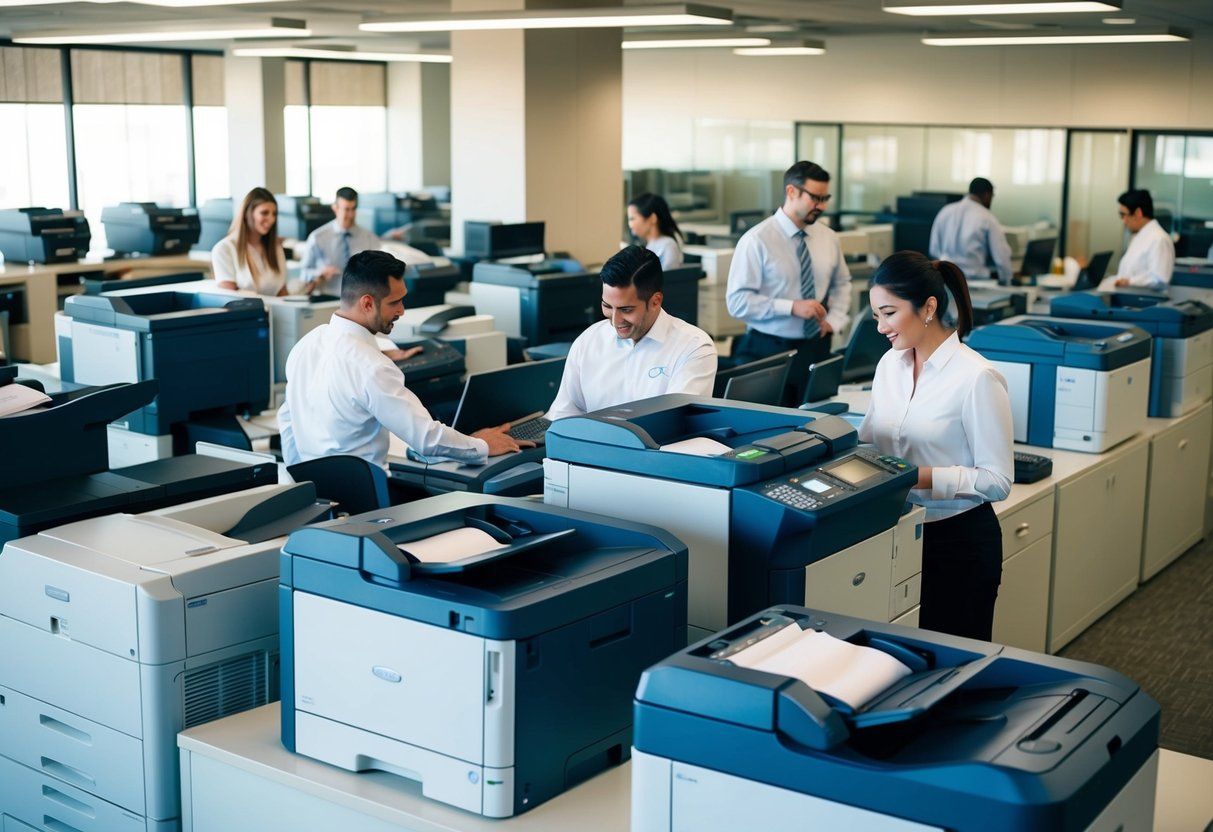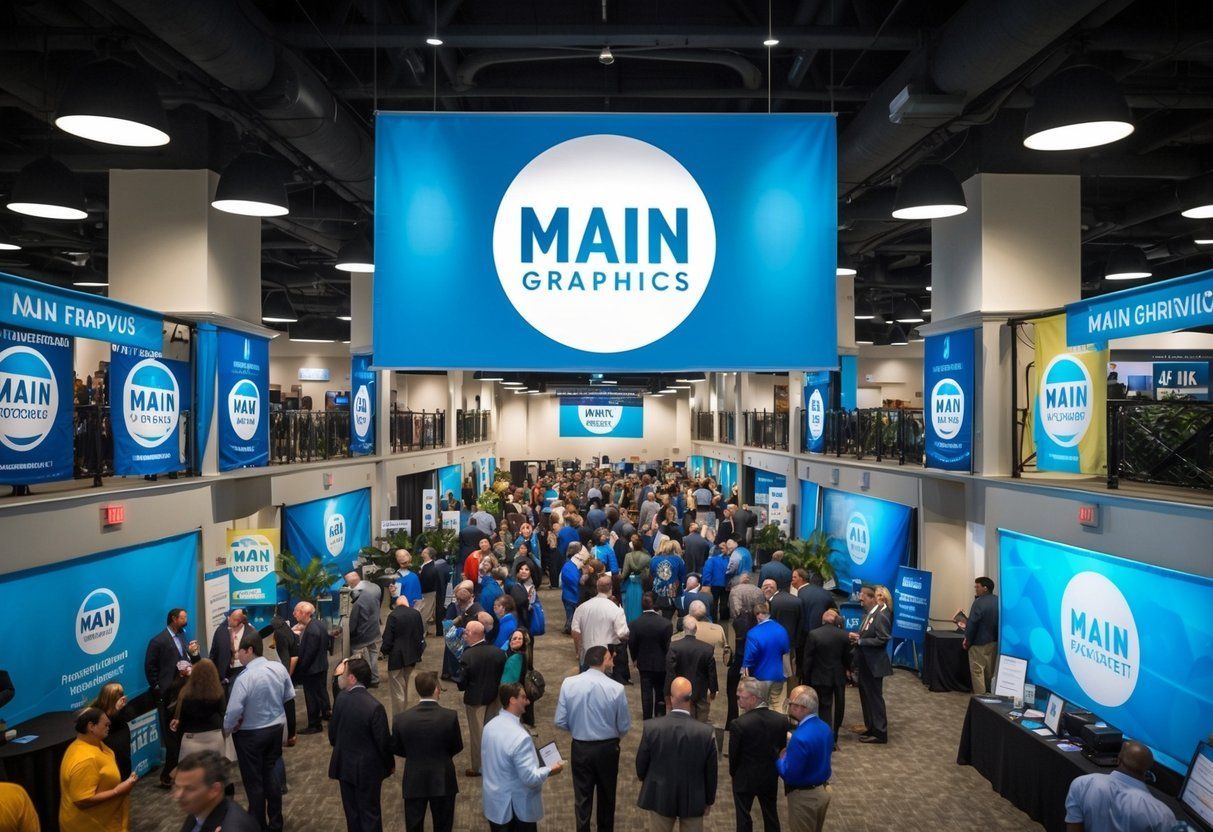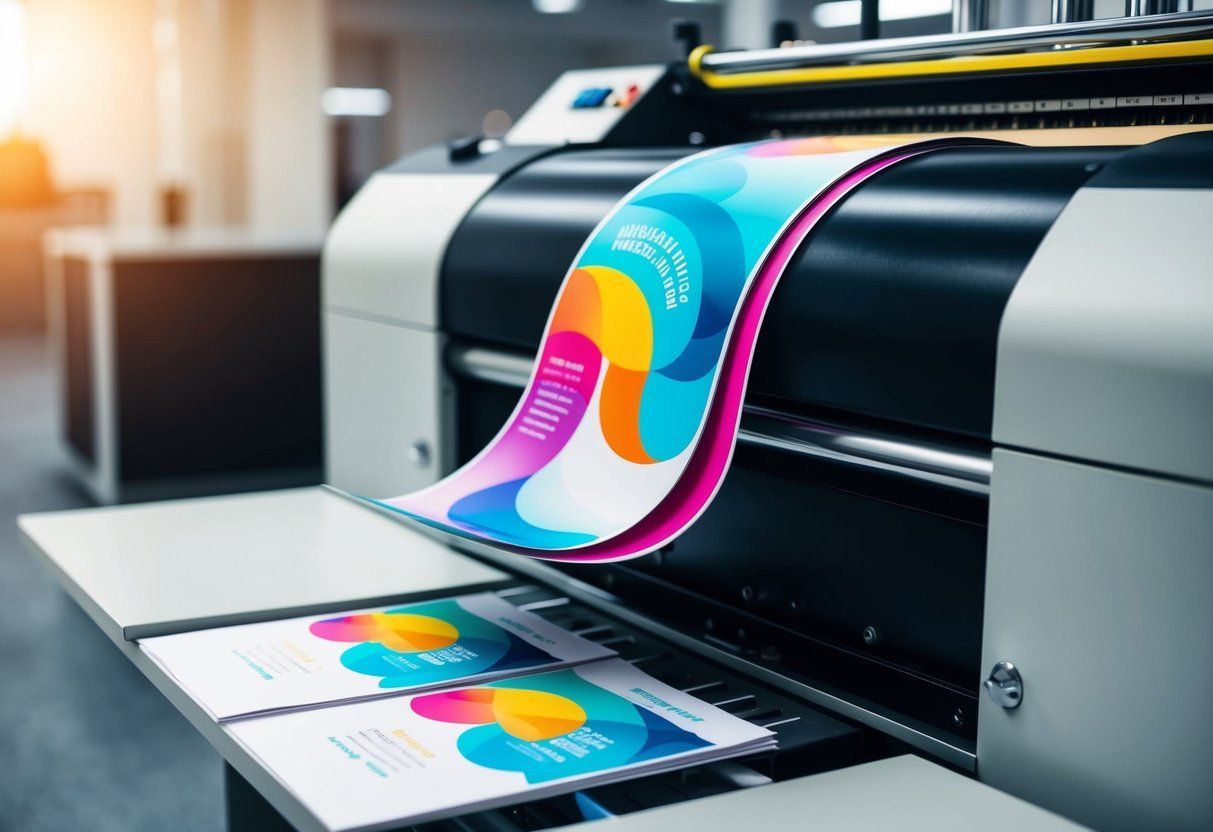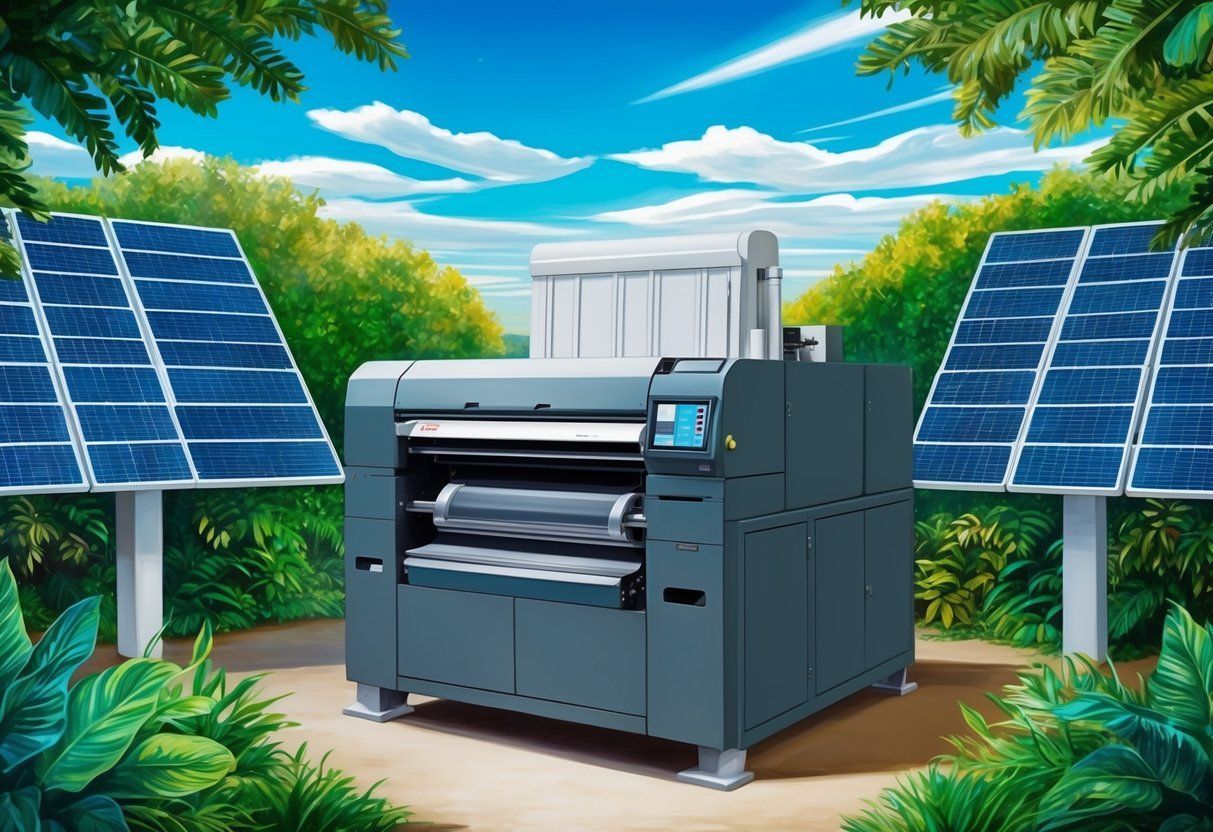Commercial Printing Services Overview: Essential Insights and Benefits for Businesses
Commercial printing services play a vital role in various industries by providing essential products like brochures , catalogs, and customized marketing materials. Understanding the current landscape of commercial printing reveals opportunities for businesses to enhance their operations while addressing the challenges of a competitive market. As technologies advance and consumer preferences shift, companies in this sector must adapt to stay relevant.
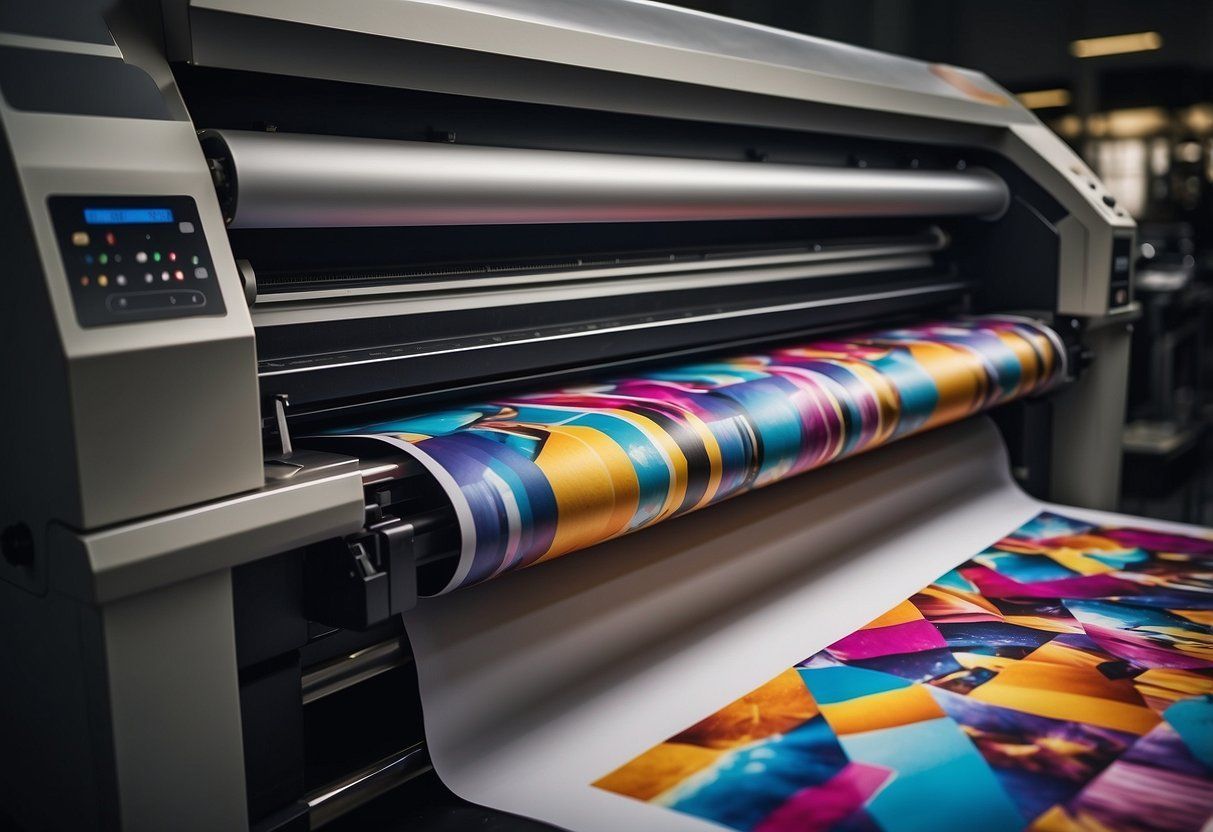
The commercial printing market is witnessing significant changes, driven by innovation and a focus on sustainability. Key trends indicate a rise in digital printing , which offers speed and customization, allowing businesses to meet specific client needs. As market demand evolves, it is crucial to explore the services and products that will shape the future of this industry.
Navigating the commercial printing landscape involves understanding both opportunities and challenges that businesses face. Companies must align their strategies to leverage the benefits of new technologies while ensuring quality control and customer satisfaction remain top priorities. There is a clear call for businesses to integrate sustainable practices as part of their operations for long-term success.
Key Takeaways
- The commercial printing industry is adapting to new technologies and market demands.
- Sustainability is becoming increasingly important for businesses in this sector.
- Quality control and customer satisfaction are critical for success in commercial printing.
Understanding Commercial Printing
Commercial printing involves creating various printed materials for businesses and individuals. It plays a crucial role in marketing, publishing, and product promotion through high-quality outputs. This area has evolved with technology, influencing how print products are produced.
Definition and Scope
Commercial printing refers to services that produce printed materials for commercial use. This includes brochures, flyers , business cards, and packaging. The commercial printing industry serves various sectors, such as advertising, education, and publishing.
Key processes in commercial printing include offset printing, digital printing , and large format printing. Each method has its advantages depending on the project’s needs. Businesses often choose digital printing for short runs and quick turnaround times, while offset printing is preferred for larger quantities due to cost efficiency.
As technology advances, commercial printing continually adapts to meet changing customer demands.
History and Evolution
The history of commercial printing dates back to the invention of the printing press in the 15th century. This breakthrough allowed for the mass production of books and pamphlets, changing how information was shared.
Over the centuries, printing technology evolved from letterpress and lithography to more modern methods such as digital printing. Each advancement improved efficiency and quality. For example, the introduction of computers and software transformed design processes, making it easier to create customized prints.
Today, commercial printing is integrated into marketing strategies. Businesses leverage it for branding, product packaging, and promotional materials. The focus on eco-friendly practices has also emerged, leading to the rise of sustainable printing options.
Services and Products
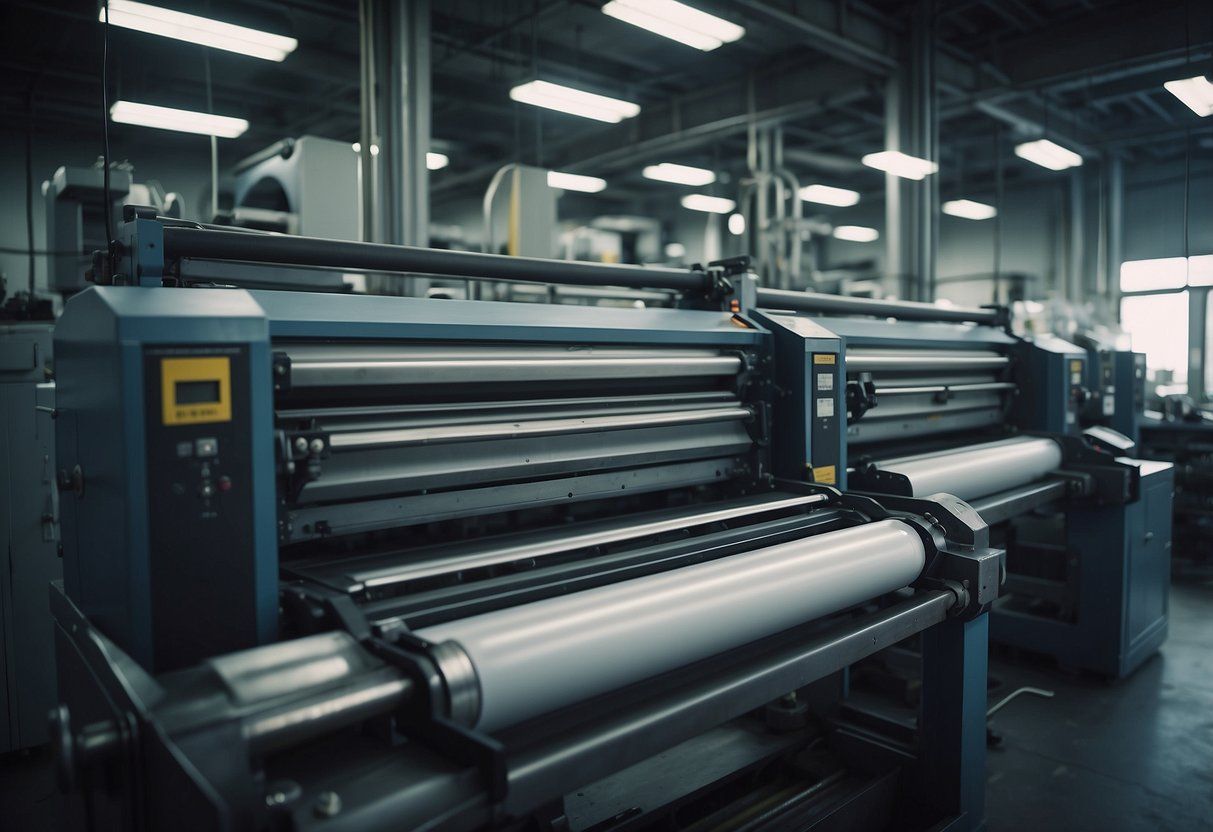
Commercial printing services encompass a wide array of offerings that cater to different business needs. These services include producing various printed materials, along with options for customization. Understanding the types of services and products available can help businesses choose the right solutions.
Types of Commercial Printing Services
Commercial printing services can be categorized into several types, each designed to meet particular needs. Digital printing is popular for short runs and quick turnaround times. It allows for flexibility, making it ideal for print-on-demand services. Offset printing is commonly used for larger volumes and delivers high-quality results.
Additionally, large format printing is used for signage, banners, and posters. It accommodates larger materials and is effective in marketing and advertising. Each of these services has its specific applications and benefits, which businesses should consider based on their objectives.
Common Printed Products
A variety of printed products are available through commercial printing services. Books and magazines are widely produced and can be customized in terms of size, binding, and cover finishes. Brochures , flyers , and posters are essential for marketing and advertising campaigns. They can be designed to grab attention and convey messages effectively.
Other products include packaging and labels , crucial for product identification and branding. Signs are often used in retail environments to promote products or provide information. Each product serves a purpose and can be tailored to a brand’s specific needs.
Customization Options
Customization is a key feature of commercial printing services. Businesses can select different sizes , colors , and finishes to match their branding. For printed materials like brochures and flyers, options such as folding styles and paper types enhance the final product.
Additionally, many services offer design assistance to help create visually appealing materials. Variable data printing allows for personalization, where each item can be unique, such as custom labels or targeted marketing pieces. This flexibility in customization helps businesses stand out in a competitive market.
Key Printing Technologies
The landscape of commercial printing includes various technologies, each suited for specific needs and applications. Understanding these key printing methods helps businesses choose the right option for their projects, balancing quality, speed, and cost.
Digital Printing
Digital printing has transformed the printing industry with its speed and flexibility. This method uses digital files to create prints without the need for traditional plates. Technologies like inkjet and laser printing are common in this category.
With advancements in inks and printing machines, digital printing offers high-quality images and color accuracy. It is particularly effective for short runs, allowing for quick turnaround times. Businesses often utilize this method for marketing materials, labels, and custom products.
Offset Lithography
Offset lithography remains a popular choice for high-volume print jobs. This method uses a flat image plate where the ink is transferred to a rubber blanket and then onto the paper.
The process provides excellent image quality and consistency. It is ideal for producing brochures, magazines, and books. The setup costs can be higher, but once established, it offers lower costs for large quantities due to efficient production.
Flexographic Printing
Flexographic printing is widely used for packaging and labels. It employs flexible relief plates that transfer ink to various substrates, including plastic, paper, and cardboard.
This technology is well-suited for long runs and can print on uneven surfaces. It uses fast-drying inks, making it efficient for large-scale production. Many companies favor flexographic printing for its speed and ability to handle a wide range of materials.
Screen Printing
Screen printing involves using a stencil and a mesh screen to transfer ink onto a substrate. It is versatile and can print on various materials like fabric, glass, and metal.
This method is commonly used for textiles, promotional products, and signage. Screen printing is valuable for both short and long runs, providing vibrant colors and durability. It is especially popular in custom apparel and specialty items.
Gravure Printing
Gravure printing is known for its ability to produce high-quality images with rich colors. This process uses an engraved cylinder to transfer ink onto the substrate, suitable for long press runs.
It is often used in magazines, catalogs, and packaging films. Gravure provides excellent detail and consistency for large quantities. The initial setup can be costly, but it pays off in high-volume situations.
3D Printing
3D printing represents a cutting-edge advancement in manufacturing. This technology builds objects layer by layer based on digital models. It allows for complex designs and customization that traditional printing methods cannot achieve.
3D printing is increasingly used in industries like healthcare, automotive, and consumer goods. By using polymers and other materials, it can create prototypes and final products with precision. As technology advances, the applications of 3D printing continue to grow, opening new possibilities for businesses.
Industry Insights
The commercial printing services industry is dynamic, influenced by various market factors and evolving technologies. Understanding these aspects helps stakeholders navigate the complexities of this sector and prepare for future developments.
Market Analysis
The global commercial printing market was valued at approximately $400 billion in 2023. It is projected to grow at a CAGR of about 2% from 2024 to 2030. Key players include large firms like Quad/Graphics and RR Donnelley, which hold significant market shares. Regional markets, particularly in North America and Europe, contribute largely to revenue, but growth in Asia-Pacific is increasing.
Market dynamics are driven by a mix of digital transformation and sustainable printing practices. Businesses are looking for innovative solutions to enhance production efficiency and reduce waste. The rise of online printing services has also altered competitive landscapes.
Trends and Forecasts
The industry is shifting towards digital printing technologies, which offer faster turnaround and customization. Furthermore, sustainable printing solutions are becoming more important as customers demand eco-friendly products.
Key trends include the adoption of automation in production and the use of data analytics to streamline operations. The market is expected to see greater integration of artificial intelligence, affecting everything from design to logistics.
Forecasts suggest that by 2030, digital printing could represent over 50% of the overall printing market. Companies that adapt to these trends will likely see enhanced revenue growth.
Economic Impact
The commercial printing sector plays a significant role in economic growth. It supports jobs across various skill levels, from graphic designers to machine operators. In 2023, the industry employed over 800,000 people in the U.S. alone.
Additionally, the printing industry is closely tied to other sectors, such as marketing and packaging. As these areas grow, the demand for printing services will likely increase. With the rise of e-commerce, businesses are seeking efficient ways to reach customers, particularly through printed materials like brochures and catalogs.
The continued adaptation to market changes will be essential for sustained economic impact in the commercial printing sector.
Geographical Landscape
The geographical landscape of commercial printing services varies significantly across different regions. Key factors include market demand, technology adoption, and economic conditions. Understanding these differences helps to identify opportunities in the global commercial printing market.
North America
North America is a leader in the commercial printing market. The United States holds a major share, driven by a strong demand for packaging, labels, and promotional materials. Companies here invest heavily in the latest printing technologies like digital and offset printing.
Key players in this region include Quad/Graphics , RR Donnelley , and Deluxe Corporation . The market size is supported by a robust e-commerce sector, which increases the need for printed materials. Sustainability is also a significant focus, with more firms adopting eco-friendly practices.
Europe
Europe is known for diverse printing needs across its countries. Germany, the UK, and France are among the largest markets. In these countries, a mix of traditional and digital printing services thrive.
Digital printing is gaining popularity, especially in short-run jobs and customization. Many European firms emphasize high-quality output and creative design. Companies often face pressure to meet strict environmental regulations, leading to investments in sustainable technologies.
The European commercial printing landscape is competitive, with players like Vistaprint and Mactac making strong impacts.
Asia Pacific
Asia Pacific shows rapid growth in the commercial printing sector. Countries like China and India are the main players. China dominates with its high production capacity, making it a key exporter.
The region is seeing a rise in digital printing technology, which supports fast turnaround and personalization. Additionally, there is an increasing demand for packaging in industries like food and beverages. In India, small and medium enterprises are expanding their printing capabilities.
Other countries, such as Japan and South Korea, focus on quality and innovation in print services.
Africa
Africa’s commercial printing services are developing, driven by population growth and urbanization. The demand for printed products, like packaging and promotional materials, is on the rise.
Countries such as South Africa and Nigeria are at the forefront of this growth. The market faces challenges like limited access to advanced technology and skilled labor. However, local companies are adapting by investing in improved equipment and training programs.
Sustainability practices are also starting to take root in the industry, appealing to both local and international clients.
Middle East
The Middle East’s commercial printing sector is influenced by the region’s economic diversification. Countries like the UAE and Saudi Arabia are investing heavily in infrastructure, leading to a growing demand for printing services.
Digital printing is increasingly favored for its flexibility and cost-effectiveness. Companies here are exploring innovative solutions to cater to various industries, including healthcare and retail.
Local firms often face competition from international companies entering the market. However, there is a strong push for modernization and adopting new technologies to meet client needs.
Latin America
Latin America presents a mixed picture for commercial printing. Brazil and Mexico are key markets, with growing demand for packaging and custom prints. Economic fluctuations can affect market stability, but the trend is toward recovery.
Local businesses are increasingly adopting digital printing to meet changing consumer preferences for personalized products. Challenges include infrastructure issues and varying levels of technological access across countries.
Sustainability is a growing concern, with many firms exploring eco-friendly materials and practices to attract environmentally conscious consumers.
Sustainability and Innovation
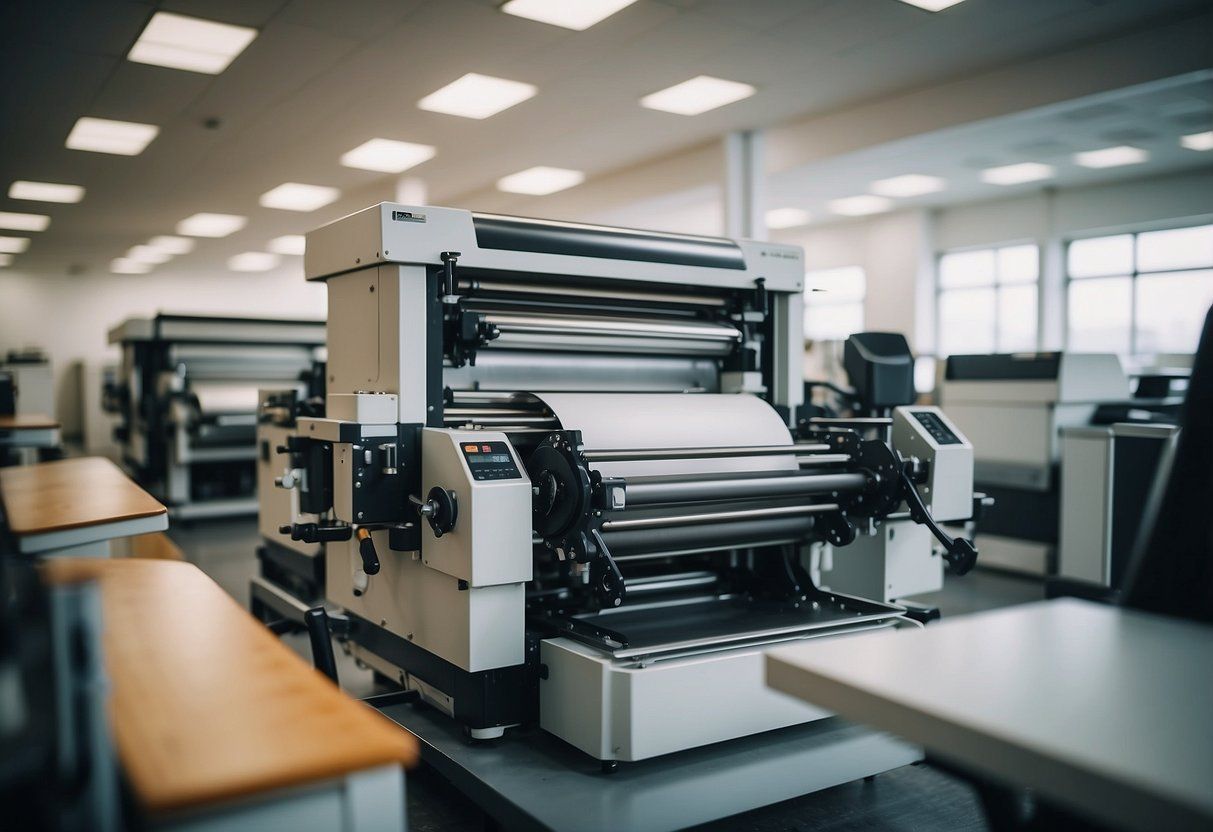
Sustainability and innovation are becoming vital in commercial printing. Companies are adopting eco-friendly practices while embracing technological advancements and automation for better efficiency. This balance creates a positive impact on the environment and boosts productivity.
Eco-Friendly Practices
Many commercial printing companies are shifting towards eco-friendly practices . They use recycled materials and sustainable inks, which reduce waste. Some businesses also focus on energy-efficient machinery that lowers energy consumption.
Additionally, waste management systems are improved to minimize excess material. This includes recycling paper and reducing chemical use. Some companies even participate in environmental certifications, proving their commitment to being green. Customers are often drawn to businesses that prioritize sustainability, creating a market advantage.
Technological Innovation
Technological innovation plays a key role in modern printing. New printing techniques, like digital printing, reduce waste compared to traditional methods. These advances allow for shorter runs, which lowers resource use.
Software improvements also help manage print jobs more efficiently. It allows companies to produce high-quality prints with less ink and paper. This is important for lowering costs and increasing customer satisfaction. Businesses that keep up with these technological trends often stay competitive in the market.
Automation in Printing
Automation in printing is changing workflows. Automatic systems can streamline the printing process, reducing the need for manual labor. This not only speeds up production but also minimizes human error.
Companies are now using robots for tasks like loading paper and packaging. These enhancements lead to faster turnaround times and lower costs. Automated systems also provide real-time data to track production, supporting better decision-making. This combination of speed and accuracy is essential in a fast-paced industry.
Business Operations
Business operations in commercial printing revolve around several key areas, including supply chain management, major industry players, customer relationships, and financial aspects. Understanding each of these areas is vital for companies navigating this competitive market.
Supply Chain Dynamics
In commercial printing, the supply chain involves sourcing raw materials like paper, ink, and printing equipment. Efficient supply chain management is crucial to maintain production timelines and meet customer demands. Companies like Acme Printing and Cimpress often establish strong relationships with suppliers to ensure quality materials at competitive prices.
Logistics is also a key factor. Timely delivery of materials affects production schedules. Producers must balance inventory levels to avoid shortages or excesses. Good supply chain practices help companies remain efficient and keep costs under control.
Major Players in the Industry
Several major companies dominate the commercial printing landscape. Notable examples include Transcontinental Inc., Cenveo Worldwide Limited, and Cimpress. These firms are known for their broad capabilities and regional reach.
Transcontinental Inc. is recognized for innovation in packaging and publishing solutions. Cenveo specializes in marketing services and print management. Cimpress leads in mass customization of print products. Together, these companies shape current trends and standards in the industry.
Customer Relationship Management
Customer relationship management (CRM) is vital for commercial printing businesses. Strong relationships lead to repeat business and referrals. Companies invest in CRM systems to track customer interactions and preferences.
Understanding client needs helps firms provide tailored services. Communication through various channels, such as email and social media, enhances engagement. This proactive approach not only retains existing clients but also attracts new customers in a competitive market.
Financial Overview
The financial health of commercial printing firms is influenced by production costs, pricing strategies, and market demand. Companies like Acme Printing and Cimpress regularly review their financial strategies to optimize profitability.
Investments in technology, such as digital printing, often lead to cost reductions and increased efficiency. Analyzing key financial metrics helps firms adjust operations to remain competitive. Regular financial assessments ensure businesses can adapt to market changes and sustain growth.
Challenges and Opportunities
The commercial printing industry faces distinct challenges while also uncovering significant opportunities. As the market evolves, understanding these aspects is crucial for companies aiming to thrive.
Addressing Industry Challenges
The commercial printing sector has encountered several challenges in recent years. One major issue is the decline in graphic printing demand , exacerbated by the COVID-19 pandemic. Many businesses reduced their marketing budgets, leading to lower print orders. Additionally, the shift to digital media has changed how companies promote their products, impacting traditional print services.
Another challenge is the need for up-to-date technology . Companies often struggle to keep pace with advancements in printing technology and automation. This can lead to increased production costs and longer turnaround times. Adapting to these changes is vital for staying competitive in a shrinking market.
Seizing Market Opportunities
Despite the challenges, opportunities abound in the commercial printing field. Many businesses are now focusing on customization and personalization in their printed materials. This trend allows printers to stand out by offering unique products tailored to customer needs.
Moreover, the rise of sustainable printing practices presents another avenue for growth. Companies that implement eco-friendly processes can attract environmentally conscious clients.
Finally, exploring new niches, such as packaging and digital printing , can lead to increased revenue. As e-commerce continues to grow, the demand for printed packaging is rising, allowing companies to diversify their offerings and expand their market presence.
Consumer Insights and Marketing
Understanding consumer insights is crucial for successful marketing in commercial printing. By analyzing preferences and effective strategies, companies can create impactful marketing materials that resonate with their target audience.
Consumer Preferences
Today’s consumers seek personalized experiences in their purchases, including commercial printing services. They prefer products that meet specific needs rather than generic options. Research shows that consumers are more likely to engage with brands that provide customized marketing collateral, such as brochures and banners tailored to their interests.
In educational settings, institutions often look for printing solutions that can adapt to various projects, from promotional materials to educational handouts. Retail businesses favor eye-catching designs that can drive sales. Overall, consumers value quality and relevance in printed materials, which influences their purchasing decisions.
Marketing Strategies
Marketing strategies in the commercial printing sector must focus on clear communication and strong branding. Companies should implement digital channels alongside traditional methods. Social media and online ads can effectively reach target demographics, while email marketing can convey personalized offers directly to consumers.
Utilizing content marketing is also vital. By sharing valuable information about printing services and trends, companies can position themselves as industry experts. Trade shows and networking events remain significant opportunities for face-to-face marketing. These strategies help establish strong relationships with clients and foster brand loyalty.
Marketing and Advertising Effectiveness
Effectiveness of marketing campaigns in commercial printing can be measured through various metrics. Key performance indicators (KPIs) like engagement rates, conversion rates, and return on investment (ROI) are essential for evaluating success.
Businesses should regularly assess the impact of their marketing efforts. Feedback from consumers can inform adjustments to strategies and messaging. For example, surveys or social media analytics can reveal what types of marketing materials resonate most.
In conclusion, targeted advertising that showcases the quality of printed materials is crucial. Clear identification of consumer preferences helps companies create impactful and memorable campaigns, driving customer engagement and satisfaction.
Quality Control and Enhancement
Quality control is essential in commercial printing. It ensures that printed materials meet specific standards and customer expectations. Various technologies and methods play a vital role in maintaining and enhancing print quality.
Ensuring Print Quality
To maintain print quality, companies implement strict procedures. These may include:
- Regular equipment checks : Machines need to be calibrated frequently to avoid inconsistencies in print output.
- Quality inspection teams : Experts examine prints during and after production. They look for issues like color accuracy and alignment.
- Use of coatings : Applying protective coatings can enhance durability and appearance. This prevents fading and scratches.
Additionally, companies often gather feedback from customers. This feedback is used to improve processes and adjust techniques. Flexibility in adapting to customer needs is key to quality control.
Advancements in Quality Control
New technologies are changing quality control in printing. Automation is being used more often to detect flaws. For example, scanners can identify color mismatches in real-time.
Software solutions play an important role too. These programs analyze print runs and generate reports on quality metrics. This helps in identifying patterns that need attention.
Moreover, binding processes are also improved. Advanced techniques ensure pages are securely attached and finished consistently.
By focusing on these advancements, companies can enhance quality and efficiency. This leads to better fulfillment of customer orders and satisfaction.
Frequently Asked Questions
This section addresses common queries about commercial printing services. Key topics include the types of services offered, differences between digital and traditional methods, turnaround times, order capabilities, quality assurance measures, and environmental impacts.
What types of services are included in commercial printing?
Commercial printing services typically include offset printing, digital printing, and large format printing. Other services may encompass brochures, flyers, business cards , banners , and packaging solutions. Each type of service caters to specific business needs and project requirements.
How does digital printing differ from traditional commercial printing methods?
Digital printing uses digital files to produce images directly onto various media. This method allows for quick printing and customization. Traditional methods, like offset printing, require plates and are better for large runs, offering more cost efficiency as the volume increases.
What are the standard turnaround times for commercial print projects?
Turnaround times can vary based on the project size and complexity. Generally, standard jobs may take anywhere from 2 to 10 business days. Rush services are often available for urgent needs, sometimes completing projects in as little as 24 hours.
Can commercial printing accommodate large-scale and custom orders?
Yes, commercial printing services can handle both large-scale and custom orders. Many printers have the capacity to produce high volumes while still offering options for customization. This flexibility enables businesses to meet specific branding and marketing needs.
What are the quality assurance measures in place for commercial printing services?
Quality assurance in commercial printing includes pre-press proofing and color matching. Many companies conduct regular maintenance on their equipment. This helps ensure consistent quality and adherence to the specifications provided by clients.
What are the environmental impacts of commercial printing, and how are they mitigated?
Commercial printing can have environmental impacts, such as paper waste and chemical emissions. To mitigate these effects, many printers adopt sustainable practices, like using recycled materials and eco-friendly inks. Certifications, such as FSC (Forest Stewardship Council), help ensure environmental responsibility.…
The post Commercial Printing Services Overview: Essential Insights and Benefits for Businesses first appeared on Guardia Law Firm Llc.
